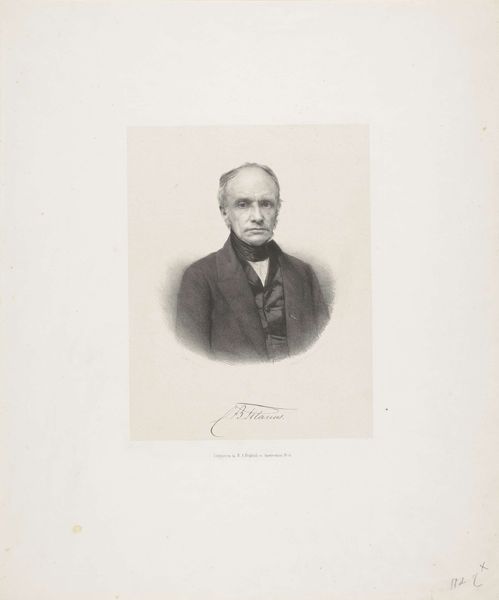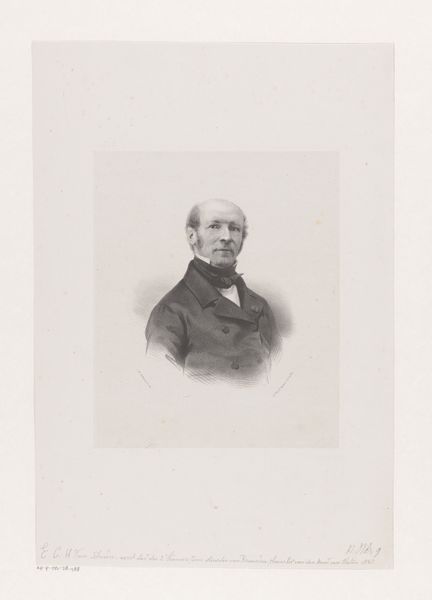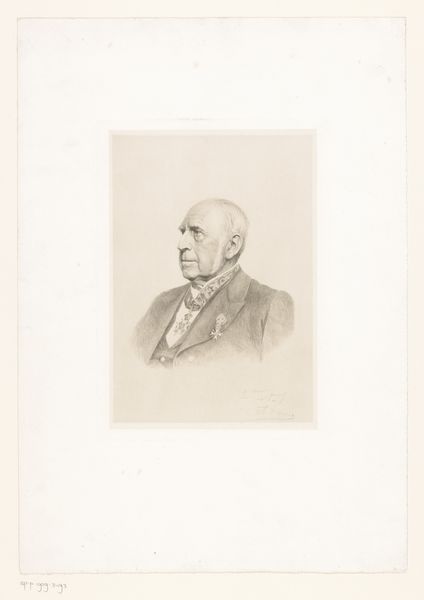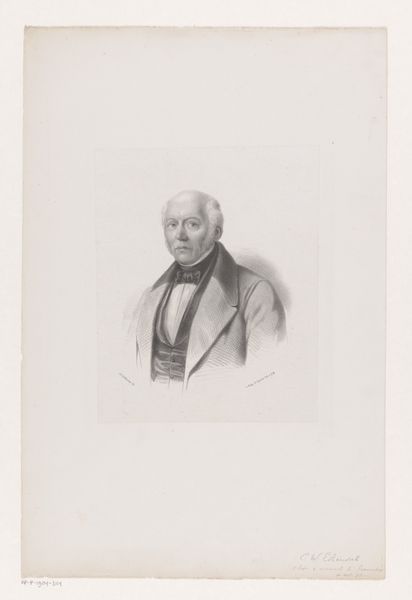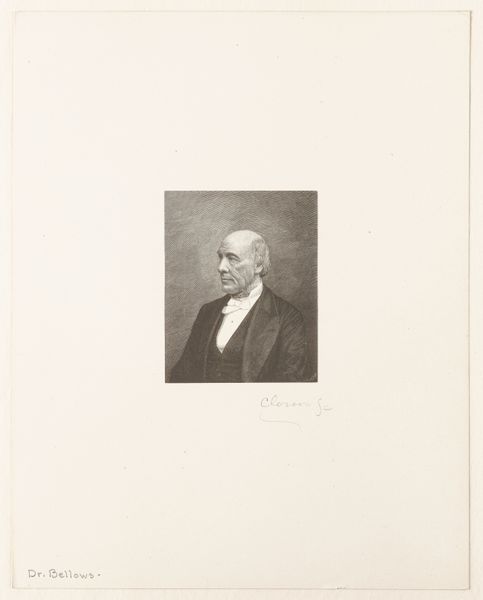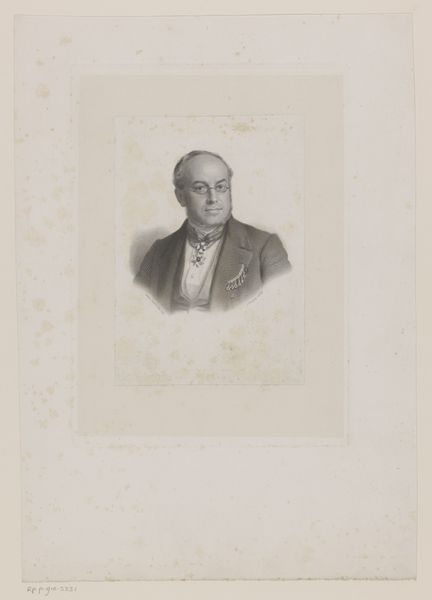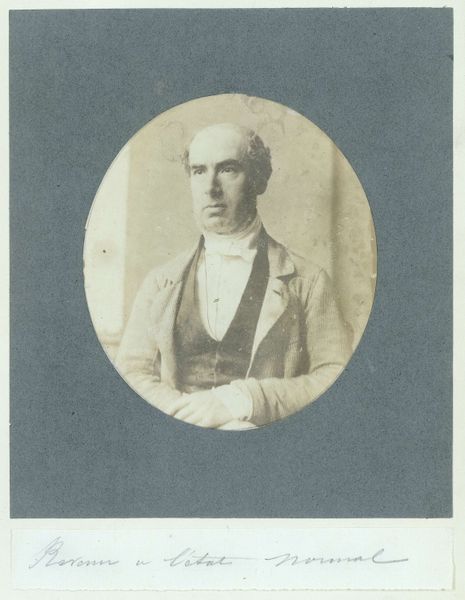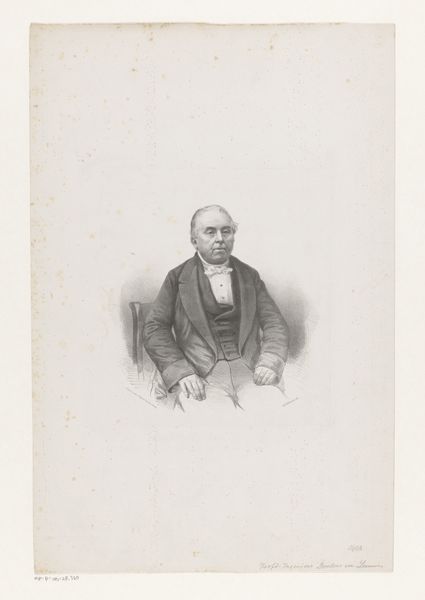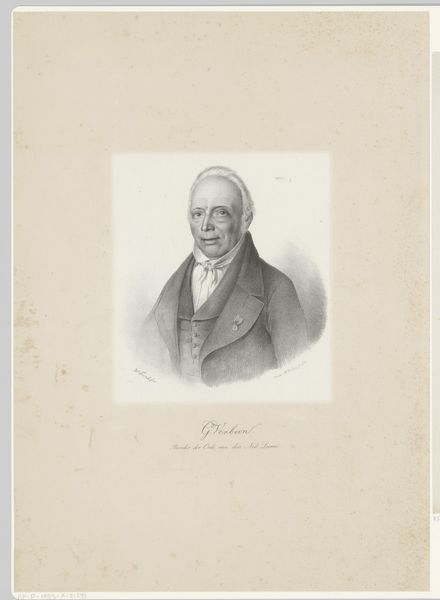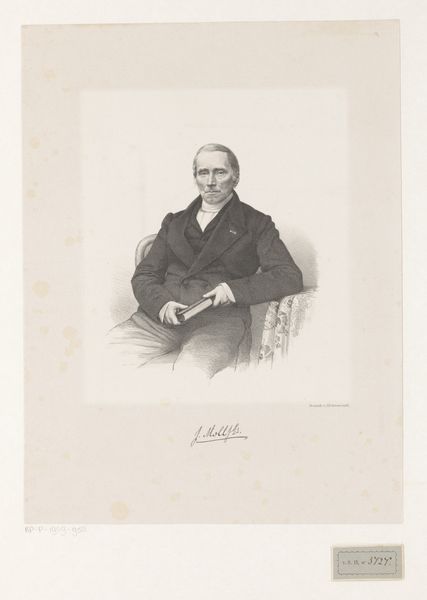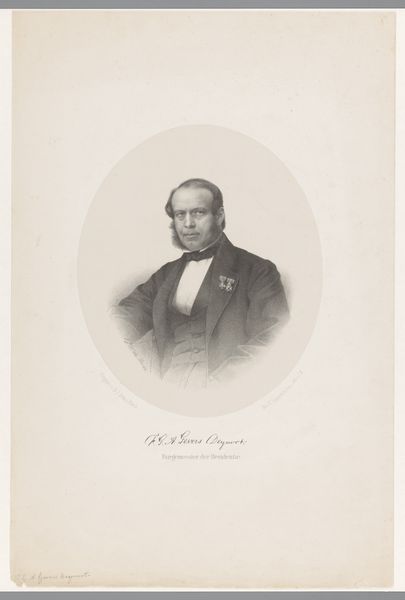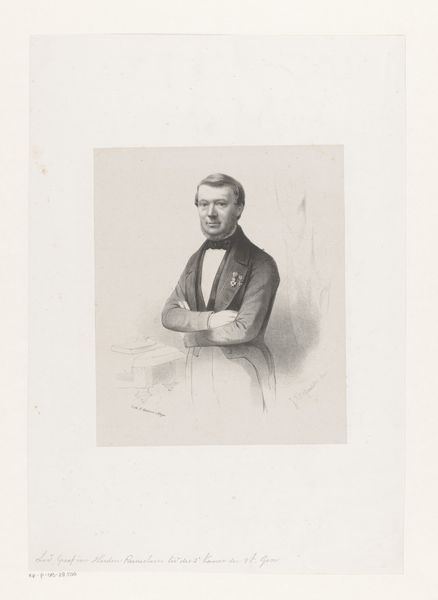
print, engraving
#
portrait
# print
#
academic-art
#
engraving
#
realism
Dimensions: height 507 mm, width 388 mm
Copyright: Rijks Museum: Open Domain
Editor: This is a print called "Portret van Abel Warocqué," dating from 1847 to 1885, housed at the Rijksmuseum, and it’s attributed to Joseph Schubert. It’s an engraving. The shading gives it a sense of gravity, almost solemnity. What compositional elements stand out to you? Curator: Immediately, the stark contrast between the figure and the negative space catches my eye. Note the artist's deliberate use of chiaroscuro to sculpt Warocqué's face and upper torso, effectively directing the viewer's gaze. The figure is the form; what is it a form of? Editor: It looks like a traditional portrait. The focus is definitely on the man’s face and the detail of his clothing. Are there underlying geometries, structuralist concepts in play? Curator: Precisely. Schubert employs an academic approach in the subject’s balanced arrangement to give primacy to the visual weight and form. Observe the carefully rendered lines forming the contours of Warocqué’s features, juxtaposed with the softness in the rendering of the coat. How might the artist leverage the interplay of line and tone? Editor: You're right, I hadn’t thought about that. It seems that contrast emphasizes both realism and depth in an otherwise flattened two-dimensional space. I am looking now at how each line matters. Curator: Indeed, notice how it is strategically applied to communicate a sense of dignity and presence. The texture too of the medium becomes significant, because its grain makes a direct appeal to touch and vision at the same time. What, do you suppose, is its philosophical implication for portraiture itself? Editor: I now have a different appreciation for what seems at first glance to be another somewhat simple, representational work of the period! I didn't notice at first the structural dynamics at play. Thank you!
Comments
No comments
Be the first to comment and join the conversation on the ultimate creative platform.

